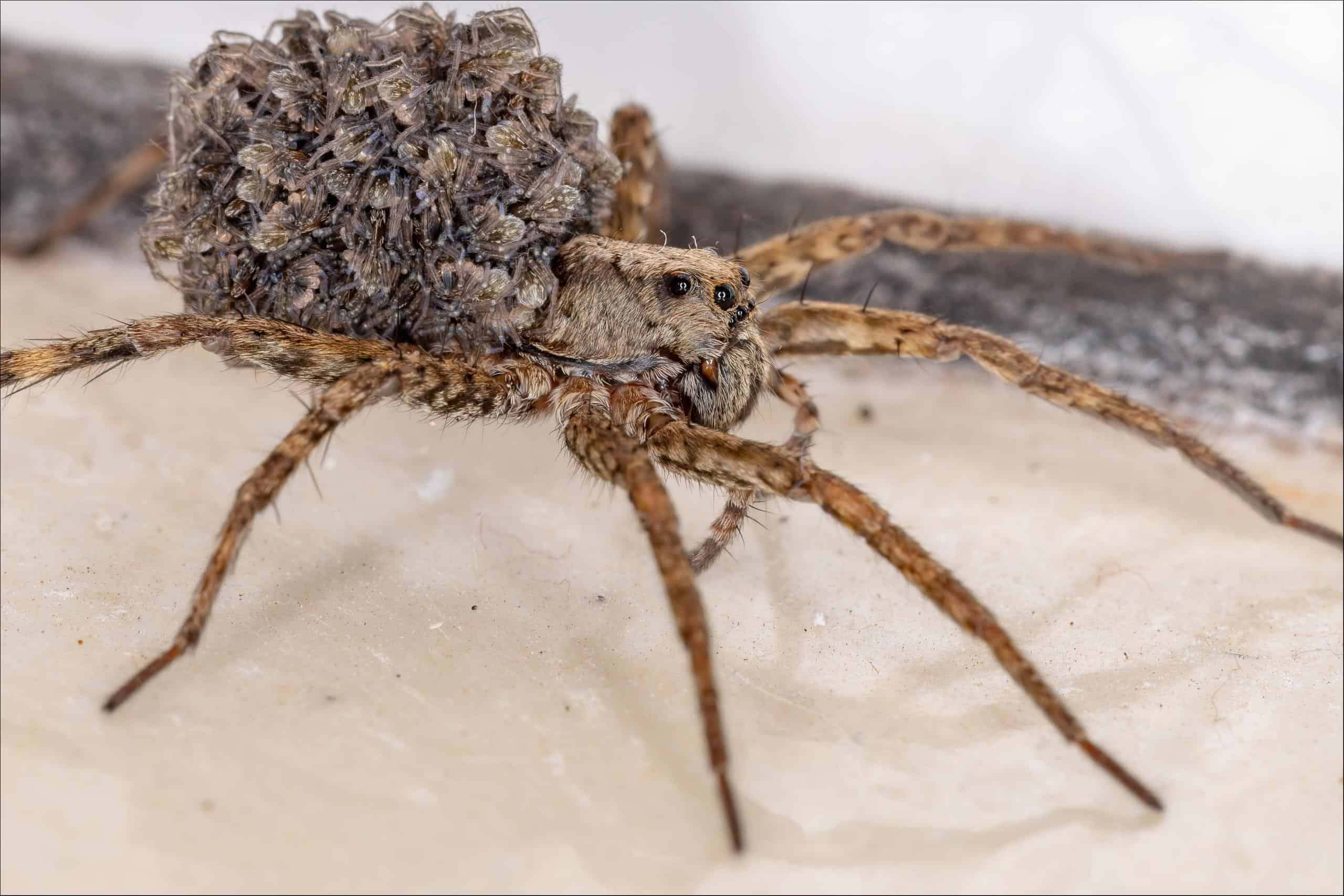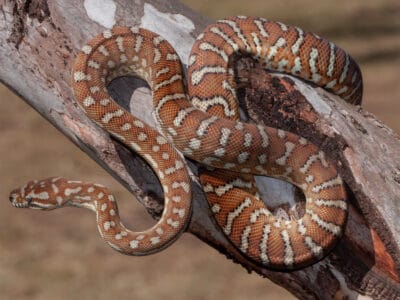Wolf Spider
.jumbotron {
background-image: url(“https://a-z-animals.com/media/animals/images/original/wolf_spider-400×300.jpg”);
}
}
@media only screen and (min-width: 641px) and (max-width: 920px) {
.jumbotron {
background-image: url(“https://a-z-animals.com/media/animals/images/original/wolf_spider-470×370.jpg”);
}
}
@media only screen and (min-width: 921px) {
.jumbotron {
background-image: url(“https://a-z-animals.com/media/animals/images/original/wolf_spider.jpg”);
}
}
Wolf Spider
The wolf spider stalks its prey like a fearsome wolf!
Wolf Spider Scientific Classification
Read our Complete Guide to Classification of Animals.
Wolf Spider Conservation Status
Wolf Spider Locations

Wolf Spider Facts
- Name Of Young
- Spiderling
- Group Behavior
-
- Solitary
- Fun Fact
- The wolf spider stalks its prey like a fearsome wolf!
- Most Distinctive Feature
- Large eyes and mouth parts
- Habitat
- Forests, plains, deserts, wetlands, and more
- Predators
- Birds, reptiles, and rodents
- Diet
- Omnivore
- Favorite Food
- Ants, beetles, crickets, and other insects
- Common Name
- Wolf Spider
- Location
- All continents besides Antarctica
- Slogan
- Carnivorous arachnid that hunts its prey.
- Group
- Spider
This post may contain affiliate links to our partners like Chewy, Amazon, and others. Purchasing through these helps us further the A-Z Animals mission to educate about the world’s species..

Spiders that fly! Fish that walk! And 1000+ more incredible animals. Discover them all for FREE
.photo-gallery {
–margin: 0px auto 0px;
–padding: 0px 0px 0px 0px;
}
.gallery-link {
background-image: url(“https://a-z-animals.com/media/animals/images/original/wolf_spider-1024×685.jpg”);
background-repeat: no-repeat;
background-size: cover;
background-position: center;
height: 500px;
justify-content: center;
text-align: center;
align-items: center;
display: flex;
border: 2px solid #000;
}
.gallery-link img {
height: 50%;
}
@media only screen and (max-width: 768px) {
.gallery-link {
height: 300px !important;
}
}
View all of the Wolf Spider images!
5 Fantastic Wolf Spider Facts
- The wolf spiders are also sometimes known as ground spiders or hunting spiders due to their interesting way of capturing prey.
- The large eyes of the wolf spider provide excellent vision, particularly at night. It has one of the best visions of all types of spiders. However, wolf spiders cannot move their eyes and rely on their wide vision to see.
- Wolf spiders have three tiny claws at the end of their legs, which help them hunt.
- The Carolina wolf spider is the official spider of South Carolina. It is also the only U.S. state to have an official spider.
- Wolf spiders are the only spider known to carry their spiderlings on their backs.
Wolf Spider Scientific Name
The scientific name of the wolf spider is Lycosidae, which comes from the ancient Greek word for wolf. This truly massive family is composed of around 124 known genera and more than 2,800 species (depending on how they’re classified). Because there are so many different types, it is difficult to give a full overview of the varieties, but there are nevertheless many similarities between them. This family belongs to the order of Araneae, which includes all known spiders.
Wolf Spider Appearance and Behavior
The wolf spider can sometimes be identified by its big eyes, long legs, bulky body, and huge mouth appendages. It has black, brown, or gray colorations sometimes mixed with tan or light orange markings. This helps them blend in with their surroundings and surprise their prey. The wolf spider has eight eyes located around its head in three distinct rows: two at the top, two on the front, and four more eyes above the mouth. These four smaller eyes provide secondary vision and contain a type of reflective tissue that can produce a powerful glow in light. The body size of the wolf spider can vary widely between 0.24 and 1.2 inches — or about the size of a coin — and they usually weigh less than an ounce. Its eight legs are significantly longer than the body and make the spider appear even larger than it actually is. Females tend to be larger than males on average. Wolf spiders are nocturnal animals that hunt exclusively at night. They spend the majority of the time on the ground, but will sometimes climb up trees or vegetation to catch prey. The wolf spider relies on its excellent vision and its sensitivity to nearby vibrations to stalk prey and avoid predators. They also make sounds and emit chemicals for communication. Wolf spiders may be either nomadic or territorial. Some species will dig holes under rocks, logs, or other objects for safety and security and then conceal the hole with detritus or rubbish. They tend to have a specific hunting ground to which they will return every night. Other wolf spiders have no specific home. They wander around a large swath of territory in search of food and may seek out human habitation when the weather turns cold. Despite being related to web-building spiders, the wolf spider does not construct large webs, but it still produces silk for egg sacs and other purposes. Consequently, their silk has a slightly different composition and strength compared to web-building spiders. Because they lack this ability, their hunting behavior is more reminiscent of a large carnivorous animal like the wolf than many other types of spiders. 
Wolf Spider Habitat
The wolf spider is a truly prolific family that can live almost anywhere in the world besides the extreme polar region and the Antarctic. Its habitat stretches across nearly the entire world, including much of the Sahara and Siberia. The most common habitats are grasslands, meadows, shrubs, forests, wetlands, gardens, and human homes. They can also live in more inhospitable places such as deserts, mountains, and even volcanoes. While some species require very specific environmental conditions, the vast majority have adapted to a diverse array of habitats. More than 200 species of wolf spider currently inhabit the United States. One of the most common species is the rabid wolf spider. It is found across Texas and Oklahoma and sometimes as far as Maine and Florida. Despite the name, the rabid wolf spider is not particularly dangerous, but it will sometimes act aggressively toward humans.
Wolf Spider Diet
The wolf spider’s diet consists almost exclusively of insects and other spiders; less commonly does it resort to small reptiles and amphibians. Some of its favorite foods are ants, grasshoppers, and beetles, but the diet can vary a great deal by climate and location. This diverse diet enables it to live almost anywhere that small invertebrates are found. The wolf spider is a lightning quick predator. Many species wait in hiding to surprise their prey and pounce on it from a great distance. They are also fast enough to chase down retreating prey. Once the prey is caught, the spider will then proceed to roll the victim into a ball or inject venom directly into its body as a way of liquefying its organ. The spider will then suck out the liquefied nutrients from the body. Wolf spiders have a few strategies to deal with scarce food supplies, particularly in harsh climates where they may experience frequent deprivation. They have the ability to slow down their metabolism or can engage in some cannibalism.
Wolf Spider Predators and Threats
Despite its fearsome behavior, the wolf spider’s small size makes it a frequent meal for larger animals such as birds, lizards, and rodents. When threatened by a predator, the wolf spider can resort to several defenses. It has the remarkable ability to detach a leg and make a daring escape (the spider later regenerates the leg, but usually at a short-term cost). The venomous bite is also a painful deterrence for many predators. If all else fails, the spider will try to use its remarkable speed and agility to run and hide. Unlike so many other animals, humans are only a minimal threat to the wolf spider family as a whole. They have adapted well to human habitats and can even co-exist with people when left alone. However, due to fear of spiders, people frequently try to kill them.
Wolf Spider Reproduction, Babies, and Lifespan
At the start of the mating season, male spiders will attempt to court females by waving their pedipalps (their special mouth appendages) in the air or banging them together. Wolf spiders are selective in choosing a mate and look for specific characteristics that may be unique to each species. It is also believed that the male may be able to sense the sexual availability and even past sexual behavior of the female from the chemical composition of her silk. Males must walk a fine line between being bold but not too aggressive in their courtship. In a small minority of mating encounters, the female may have the tendency to eat the male. This can sometimes even occur before they have successfully mated if the encounter goes wrong. It has also been documented that males can eat older females of lower reproductive value, but this situation is far rarer than the reverse. Whether or not the male survives the encounter, the female is largely left alone to lay dozens of eggs and bear most of the child-rearing duties. One of the many distinguishing features of the wolf spider is the fact that females will wrap the eggs up in silk and carry the egg sac around on her abdomen. After hatching, the newborn spiders will emerge from the sac and climb on the mother’s back for the remainder of their juvenile lives. After several weeks, the young spiders will be old enough to live on their own. They are the only types of spiders known to carry their young on their back. Most wolf spiders tend to live for one year, although some can live up to two years. Due to their shorter lifespans, wolf spiders need to produce as many offspring as possible before they die. Many of these offspring are killed early and do not survive long enough to mate. For this reason, spiders prefer to reproduce for sheer quantity.
Wolf Spider Population
Most species of wolf spider are considered by conservationists to be under no serious threat. Their sheer adaptability has made them one of the most successful animals on the planet thanks to their wide distribution and stable population numbers. But there are several exceptions to this rule. According to the International Union for the Conservation of Nature (IUCN) Red List, some of the species located on small islands such as Desertas and Saint Helena are all critically endangered. Numerous other species are either endangered or vulnerable. Due to the massive number of species, many of which are quite rare and remote, it is difficult to track and conserve all of them. The precise population numbers are not entirely known.
Wolf Spider FAQ
What does a wolf spider look like?
Wolf spiders can be identified by their rather large mouth parts, their subdued colors, and their big, circular eyes. Due to their appearance, the larger species of wolf spider are sometimes mistaken for tarantulas, but these two families are only distantly related to each other.
Are wolf spiders dangerous?
The wolf spider’s venom is not very dangerous to humans. Even if you were bit, the venom would produce nothing more serious than slight redness, itchiness, and swelling. There is some debate about whether the bite of a wolf spider can spread harmful bacteria that may cause parts of the skin to become infected. However, these cases are rare and haven’t been clearly linked to the wolf spider specifically. No other serious complications have been documented.
Are wolf spiders good to have around?
Although fear of large spiders is common, wolf spiders are actually an important part of the ecosystem. They feed on insects that many humans would consider pests. Many of these insects can destroy crops and useful vegetation.
Are wolf spiders carnivores, herbivores, or omnivores?
Since they eat primarily insects and other spiders, the wolf spider is a carnivore. Unlike many other spiders, it hunts its prey rather than catches it in a web.
How did the wolf spider evolve?
The evolution of the wolf spider isn’t entirely well understood, but it is thought that the very first spiders likely evolved over 350 million years ago — around the same time as the ancestors of mammals, reptiles, and other land animals. The wolf spider family evolved from web-spinning spiders some tens of millions or even a hundred million years ago, making its lineage truly ancient and diverse.View all 74 animals that start with W
Wolf Spider FAQs (Frequently Asked Questions)
Wolf Spider vs Tarantula
Wolf spiders are often confused with tarantulas. The biggest difference between the two is size, where tarantulas are significantly larger.
Wolf spiders vs Fishing Spiders
One spider that wolf spiders are commonly mistaken for are fishing spiders. While the two spiders may look alike they have some key differences. For one, fishing spiders have longer legs to aid them in hunting on water. Wolf spiders have different eyes compared to fishing spiders and also will carry their offspring on their back, which is a unique trait.
Are Wolf Spiders herbivores, carnivores, or omnivores?
Wolf Spiders are carnivores, with a diet consisting primarily of spiders and other insects.
What Kingdom do Wolf Spiders belong to?
Wolf Spiders belong to the Kingdom Animalia.
What phylum do Wolf Spiders belong to?
Wolf Spiders belong to the phylum Arthropoda.
What class do Wolf Spiders belong to?
Wolf Spiders belong to the class Arachnida.
What family do Wolf Spiders belong to?
Wolf Spiders belong to the family Lycosidae.
What order do Wolf Spiders belong to?
Wolf Spiders belong to the order Araneae.
What type of covering do Wolf Spiders have?
Wolf Spiders are covered in Hair.
Where do Wolf Spiders live?
Wolf Spiders live in all continents besides Antarctica.
In what type of habitat do Wolf Spiders live?
Wolf Spiders live in forests, plains, deserts, and wetlands.
What are some predators of Wolf Spiders?
Predators of Wolf Spiders include birds, reptiles, and rodents.
What is an interesting fact about Wolf Spiders?
Wolf Spiders are a carnivorous arachnid that hunts its prey.
What is a baby Wolf Spider called?
A baby Wolf Spider is called a spiderling.
What is the lifespan of a Wolf Spider?
Wolf Spiders can live for 1 to 2 years.
What’s the difference between a wolf spider and a hobo spider?
There are many differences between hobo spiders and wolf spiders. Wolf spiders are larger than hobo spiders, and they have more hair and eyes. Read all about their differences here!
What are the key differences between huntsman spiders and wolf spiders?
The key differences between huntsman spiders and wolf spiders are appearance, behavior, and habitat.















